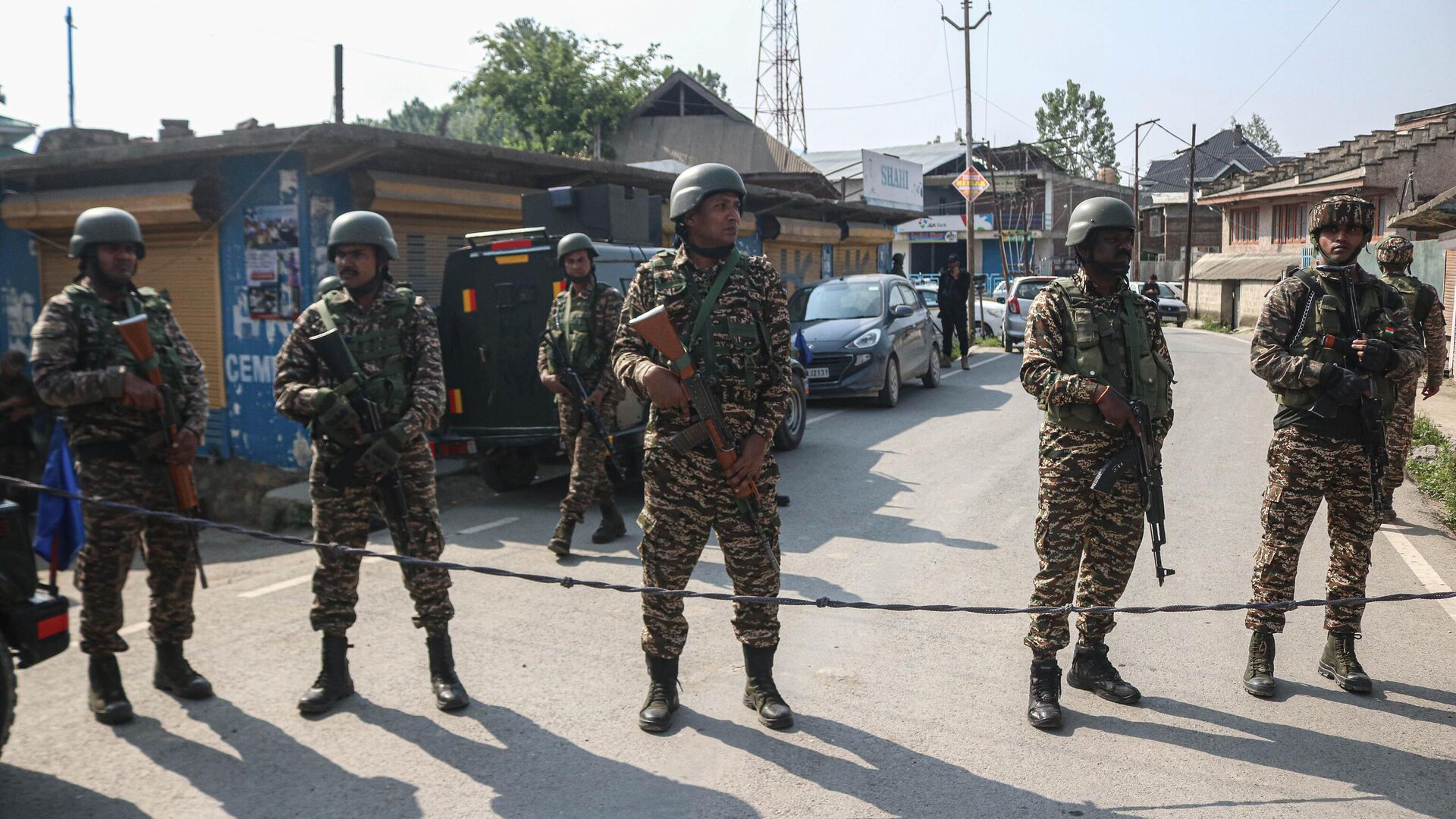https://sputniknews.in/20250606/central-bank-chief-breaks-down-the-real-impact-of-pakistan-conflict-on-indias-economy-9248204.html
Central Bank Chief Breaks Down the Real Impact of Pakistan Conflict on India’s Economy
Central Bank Chief Breaks Down the Real Impact of Pakistan Conflict on India’s Economy
Sputnik India
Unlike Pakistan, whose economy has been saved by a string of bailout packages from the International Monetary Fund (IMF), India has been the fastest-growing... 06.06.2025, Sputnik India
2025-06-06T18:28+0530
2025-06-06T18:28+0530
2025-06-10T19:12+0530
business & economy
india
pakistan
reserve bank of india (rbi)
s-400 air defense systems
international monetary fund (imf)
akash missile
missiles
drone
drone attack
https://cdn1.img.sputniknews.in/img/07e9/05/07/9077116_0:160:3072:1888_1920x0_80_0_0_fcff8fdaee5d0fffb582740385e12811.jpg
Reserve Bank of India (RBI) Governor Sanjay Malhotra underlined that India's military confrontation with Pakistan last month had only a negligible impact on the country's economic activity.India launched Operation Sindoor in retaliation for the Pahalgam terrorist attack in which 26 people, mostly civilians, were killed, on May 7, against terrorist infrastructure in Pakistan.The Indian Armed Forces struck 9 terror targets inside Pakistan-held Kashmir and Pakistan, including the headquarters of global terror outfits, Jaish-e-Mohammad (JeM*) and Lashkar-e-Taiba's (LeT*), in Bahawalpur and Muridke, respectively.In response to India's missile strikes, Pakistan began Operation Bunyan Marsoos, attacking Indian military installations and civilian areas with swarm drones and ballistic missiles. However, India's air defences, led by the Russian-origin S-400 and the indigenous Akash missile system, neutralised nearly all these aerial threats.During the four days of hostilities between the two nuclear-armed neighbours, Pakistan completely shut its airspace for all flights, while India restricted air travel across its northern and western borders.In addition to that, blackouts were enforced, and civilian movement was restricted in frontier districts like Amritsar, Gurdaspur, and Bikaner, among others, affecting the economy on a small scale in these areas.*banned terrorist group
https://sputniknews.in/20250516/how-operation-sindoor-marked-a-shift-in-indias-counter-terror-strategy-9147772.html
india
pakistan
Sputnik India
feedback.hindi@sputniknews.com
+74956456601
MIA „Rossiya Segodnya“
2025
Pawan Atri
https://cdn1.img.sputniknews.in/img/07e6/0c/13/139630_147:0:831:684_100x100_80_0_0_8fa2b25903e7787fe6a2698552c167df.png
Pawan Atri
https://cdn1.img.sputniknews.in/img/07e6/0c/13/139630_147:0:831:684_100x100_80_0_0_8fa2b25903e7787fe6a2698552c167df.png
News
en_IN
Sputnik India
feedback.hindi@sputniknews.com
+74956456601
MIA „Rossiya Segodnya“
Sputnik India
feedback.hindi@sputniknews.com
+74956456601
MIA „Rossiya Segodnya“
Pawan Atri
https://cdn1.img.sputniknews.in/img/07e6/0c/13/139630_147:0:831:684_100x100_80_0_0_8fa2b25903e7787fe6a2698552c167df.png
india, pakistan, reserve bank of india (rbi), s-400 air defense systems, international monetary fund (imf) , akash missile, missiles, drone, drone attack, unmanned aerial vehicles (uavs), operation sindoor
india, pakistan, reserve bank of india (rbi), s-400 air defense systems, international monetary fund (imf) , akash missile, missiles, drone, drone attack, unmanned aerial vehicles (uavs), operation sindoor
Central Bank Chief Breaks Down the Real Impact of Pakistan Conflict on India’s Economy
18:28 06.06.2025 (Updated: 19:12 10.06.2025) Unlike Pakistan, whose economy has been saved by a string of bailout packages from the International Monetary Fund (IMF), India has been the fastest-growing economy in the world for the last few years.
Reserve Bank of India (RBI) Governor Sanjay Malhotra underlined that India's military confrontation with Pakistan last month had only a negligible impact on the country's economic activity.
"The conflict... had a very, very limited, negligible impact on economic activity. It did have some impact for those days, especially in northern India, airports being closed, air passenger traffic did certainly decrease, but there was no major supply chain disruption, etc," India's central bank chief said at an event on Friday.
"For few days, prices in those regions, those sectors, had gone up, but it has all normalised. It does not have any major impact on the economy," he added.
India launched Operation Sindoor in retaliation for the Pahalgam terrorist attack in which 26 people, mostly civilians, were killed, on May 7, against terrorist infrastructure in Pakistan.
The Indian Armed Forces struck 9 terror targets inside Pakistan-held Kashmir and Pakistan, including the headquarters of global terror outfits, Jaish-e-Mohammad (JeM*) and Lashkar-e-Taiba's (LeT*), in Bahawalpur and Muridke, respectively.
In response to India's missile strikes, Pakistan began Operation Bunyan Marsoos, attacking Indian military installations and civilian areas with
swarm drones and ballistic missiles. However, India's air defences, led by the Russian-origin S-400 and the indigenous Akash missile system, neutralised nearly all these aerial threats.
During the four days of hostilities between the two nuclear-armed neighbours, Pakistan completely shut its airspace for all flights, while India restricted air travel across its northern and western borders.
In addition to that, blackouts were enforced, and civilian movement was restricted in frontier districts like Amritsar, Gurdaspur, and Bikaner, among others,
affecting the economy on a small scale in these areas.



